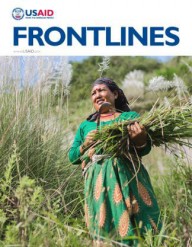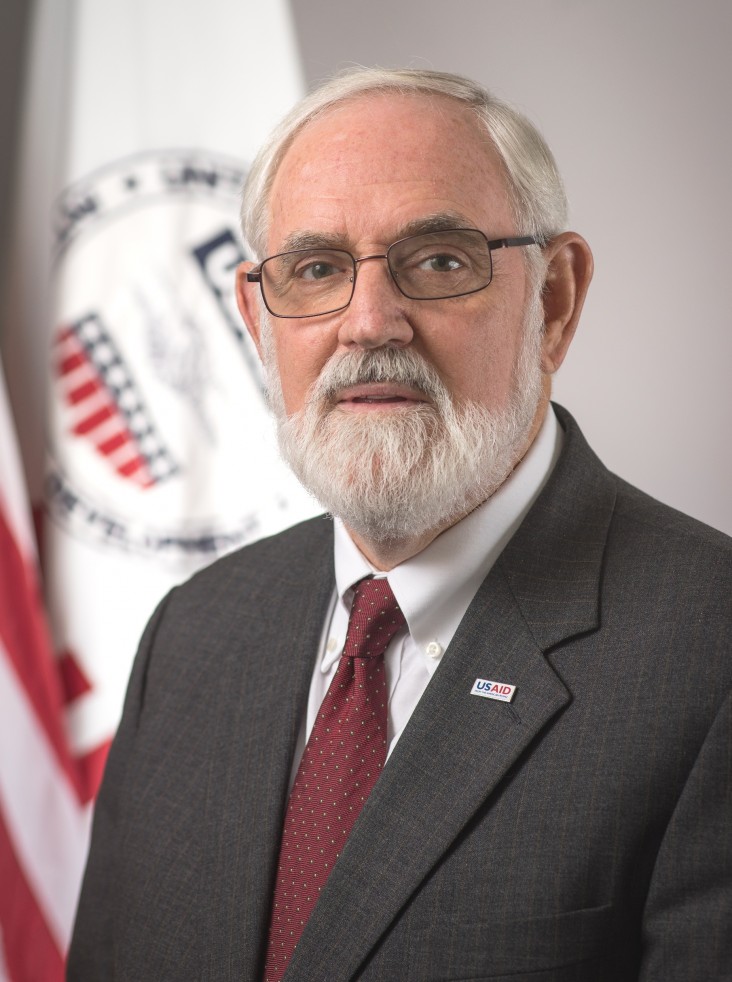Speeches Shim
Resilience. It’s an integral part of USAID’s mission statement, but what does it mean for how we do business?
USAID defines resilience as “the ability of people, households, communities, countries and systems to mitigate, adapt to and recover from shocks and stresses in a manner that reduces chronic vulnerability and facilitates inclusive growth.” In short, resilience is the ability to prepare for shocks—including natural and manmade disasters—to respond effectively to crises and to build back better than before.
In many ways, this concept is not new. As mission director in Ethiopia, I was acutely aware that the country’s poorest communities could benefit enormously from simple, targeted investments to help them break out of the cycle of crises that envelops them year after year.
During my tenure, we supported the Productive Safety Net Program (PSNP), which made sure Ethiopia’s poorest farmers had enough to eat during lean seasons. We also reformed land contracts to safeguard women’s land rights. By ensuring both husband and wife were listed on a land contract, we helped women assert their right to the land if they became widowed or divorced. And through Feed the Future, we greatly expanded agricultural productivity.
In the years leading up to the 2011 drought—the worst drought to hit the Horn of Africa in 60 years—PSNP provided the poorest families in Ethiopia with seasonal food and cash assistance, which allowed them to avoid selling their assets, such as livestock. USAID also provided supplementary animal feed to more than 32,000 cattle, sheep and goats and access to vaccinations to protect approximately 1.4 million animals from drought-induced diseases.
USAID’s assistance helped families protect their livestock and recover more quickly after the drought. For pastoralists, livestock serve as both a savings account and an income-generating activity. Once a family’s livestock are depleted, it is very difficult for them to get back on their feet.
Ethiopia’s response to the 2011 drought became a model for Horn of Africa governments and development partners.
After the drought, USAID launched a new policy on resilience. We set out to integrate our humanitarian and development investments to help the most vulnerable plan for and adapt to droughts and other shocks.
For example, in drought-prone areas of the Horn of Africa and the Sahel, our programs combine food assistance, climate adaptation, nutrition, governance and other investments to allow the poorest communities to protect their livelihoods and assets. In Asia, we are designing programs that address a variety of interconnected challenges that undermine development, including natural disasters, rapid urbanization and climate change.
In Ethiopia, our programs are paying dividends. This year, poor rains threaten Ethiopia’s pastoralists once again, but our efforts are helping them adapt. We are providing vouchers to support livestock health. In places where livestock might die due to poor grazing conditions and lack of water, we are helping pastoralists sell their livestock for slaughter and secure a fair price before the market is flooded or their animals die. We are also training pastoralists in jobs that are not as susceptible to climate change.
In 2015, to maximize the impact of our work we launched the new Center for Resilience in Washington. We also established the Resilience Leadership Council (RLC)—a senior-level body with representatives across the Agency—that I am pleased to co-chair alongside the Bureau for Food Security assistant to the administrator. The RLC and Center for Resilience support our work in the Sahel (Burkina Faso, Niger and Mali), the Horn of Africa (Ethiopia, Kenya, Uganda and Somalia) and in Nepal, as well as a growing number of other missions.
We also began an exciting new initiative with The Rockefeller Foundation and the Swedish Agency for International Development Cooperation in 2014—the Global Resilience Partnership—to co-invest in innovative and scalable solutions to building resilience.
In order to lift millions out of extreme poverty and meet the 2030 Global Goals, promoting resilience will be critical. We are excited about the progress we see happening around the world today, and are confident our efforts will continue to pay dividends in the years to come. In this edition of FrontLines, meet some of the people whose lives today are a testament to the importance of building resilience to safeguard our development gains.




Comment
Make a general inquiry or suggest an improvement.